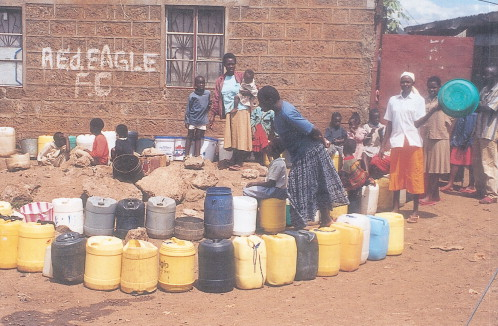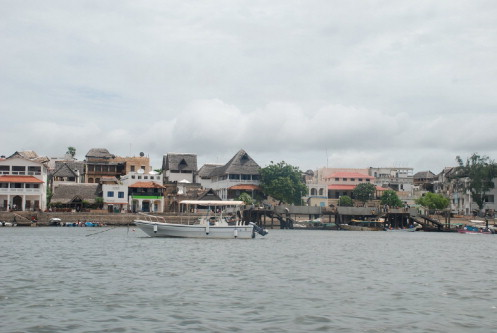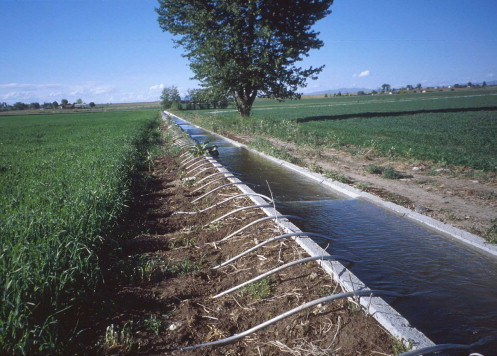


With a water shortage problem that has persisted for many years and a shrinking budget for its water sector, Kenya is seeking through its various institutions to reconstruct and refurbish current water supply facilities. This includes the installation of new pumping systems to enhance supply.
Through local media, some of the state-owned firms have invited bids from contractors for the installation of water pumping systems which would improve the current water supply networks. One of the projects already completed involved the installation of a water pumping system at a rice irrigation scheme.
Ahero Irrigation Scheme
The National Irrigation Board (NIB) is a state corporation with a mandate to develop Kenya's irrigation infrastructure, rehabilitate existing infrastructure, and promote and manage all national irrigation schemes in the country. It has installed new water pumping facilities at the Ahero Irrigation Scheme in the Nyando District, on the shores of Lake Victoria. The new set of submersible water pumps replaced those that had been worn out and were slowing down the water pumping process. NIB awarded the tender for the installation of the mixed submersible axial/mixed-flow pump to the Kenyan Incorporated Petroleum and Industrial Services Limited (PIS).
According to the Irrigation Board's general manager, engineer Daniel Barasa, the contractor was tasked with removing the entire pumping system in a bid to improve the water flow across the 2,200 acre (900 hectare) irrigated farm. Installation of the 100 mm × 6 m submersible water pumps was preceded by excavation of the concrete works. A statement issued by PIS says the two vertical submersible pumps installed at the site have a capacity of 660 litres per second and “are electrically driven, complete with control panels, appropriate sensors, cabling and other necessary accessories.” It adds: “We also supplied and installed appropriate conveyance pipe columns and associated accessories.”
Barasa added: “The works also involved designing and constructing concrete pump sumps and a service deck for the two pump units being installed.” This was done specifically to avoid unnecessary or excessive flooding that may be caused by too much water in the sump pit where the pumping system was installed.
Because of the water-logged conditions at the Ahero Irrigation Scheme, the National Irrigation Board had to choose a pump set which would withstand the conditions, hence the choice of the submersible mixed-flow pump.
According to John Kabuti, one of the NIB engineers involved in the installation of the pump sets, the model installed at Ahero Scheme is “efficient and can last for up to ten years before any major servicing is done on them.” This model of pump runs in the water with low noise and low temperatures at a pumping station. Frequent flooding followed by prolonged dry periods in the location of the Ahero irrigation scheme has resulted in a wide variation in the water levels between the two seasons. Kabuti added that the submersible mixed flow pumps are the most suitable because such fluctuating water levels maximize their pumping efficiency.
PIS is a partner in the supply and installation of water technology with global water and wastewater solution provider ABS Group. The ABS Group recommended the submersible propeller VUP pump for the irrigation scheme because they “are ideal for applications where large volumes of water have to be pumped up to heads of 12 m.” The pump can be easily removed for inspection, maintenance or reinstallation.
According to PIS, the installation involved inserting the pumps in vertical steel columns to enable each of them to draw water from the chamber below it. The flowing water cools the motor and is discharged from an outlet at the top of the column.
The NIB engineering department says: “The only fastenings to be removed for maintenance work are those of the plate covering the access hatch at the top of the column, through which the assembly is withdrawn and returned.” NIB said in its 2010 appraisal of the irrigation schemes it manages across Kenya that there was a notable increase in the amount of rice produced from Ahero. This has been linked to the installation of a new pumping system.
A similar contract is to be implemented at the Indian Ocean city of Mombasa where a submersible water pump is set to be installed. The water pump will serve three rehabilitated and seven new boreholes which are to supply water to sections of the city inhabited by approximately 750,000 people.
Coast Water Services Board
The Coast Water Services Board is a state-owned institution which manages water supply and sanitation services in the coastal city. According to the Board, bids have been invited from prospective local and international contractors for the construction of a 10.4 km water pipeline to connect the water pumped from the boreholes to two main water reservoirs sited at Kayabombo and Magodzoni.
Maro Andy Tola, CEO of the Coast Water Services Board said an assortment of water pipes will be linked to the water pump to facilitate conveyance of the water from the pumping site to the reservoirs. Two types of water pipes are to be used. In the first phase a 10.4 km PVC-U will be installed with specifications of DN 110 mm to DN 315 mm. This pipeline will convey water pumped from the boreholes to Kayabombo and Magodzoni water reservoirs. The second set of pipes will be 7.3 km made of PVC-U with specifications of DN 225 mm to DN 500 mm. This stretch of the pipeline will distribute water for the area between Likoni and Ukunda.
The Water and Sanitation Service Improvement Project (WASSIP) is being implemented under the Tiwi Boreholes and Likoni Pipeline programme with financing from the World Bank affiliate, the International Development Association (IDA). In addition to the rehabilitation and drilling of the boreholes and the installation of a water pump powered by a 55 kW motor, the contractor is to install surge equipment which entails erecting a 500 litre surge tank.
The reconstruction and rehabilitation of water supply networks through the installation of new water pumping systems and associated piping works is being implemented by many of the eight water services that control water and sewerage service provision nationwide. The Athi Water Services Board (AWSB) is another state-owned institution which manages water supply and sanitation services in Nairobi. It is carrying out a similar project at Kabete in the outskirts of the capital.
The Nairobi Water and Sewerage Emergency Physical Investment Project (NWSEPIP) is being financed by Agence française de developpement (AFD). Among other major works Kabete water pumping system will be expanded by installing two water pump sets with all suction and discharge pipework, valves, specials and fittings at the Gigiri Pump station.
The main civil works at the water pumping site, says Rose Mugo, CEO of AWSB, include laying of a 9.3 km pipeline of DN 700 steel PN25 from Gigiri Pumping Station to Kabete reservoirs, including all fittings and other pipeline appurtenances. Under this contract, the AWSB will also carry out a major rehabilitation of the Kabete Treatment Works.
“The pipeline works will include crossing of major roads and connections to the existing water transmission pipeline and reservoirs; all of which will require the contractor to take special precautions to avoid interference with normal water supply,” Mugo said. Specific mechanical and electrical works for the contract will include installation of two water pump sets, “complete with all suction and discharge pipe work, valves, specials and fittings at Gigiri Pump station.”
Once enlisted, the contractor would install all electrical equipment including pump control systems. Existing pump sets, instrumentation and controls at Gigiri Pump Station will be refurbished while all relays will be tested at the Gigiri and Kabete water pumping stations with the replacement of defective ones.
Upgrading the existing surge tank at Gigiri and the expansion of suppression equipment at Kabete will be done under the guidance of the surge analysis at both sites. Three flow measuring instrumentation at Gigiri, Kabete and Uthiru are set to be replaced once the project is completed.
Several factors are catalyzing an upsurge in the supply and installation of the latest cost effective water and sewerage pumping system in Kenya including an increasing population keen to access clean drinking water and efficient sewerage services. Kenya, Eastern Africa's largest economy, is registering good progress in its economy and the demand for reliable and sustainable water supply for both domestic and commercial use is steadily rising.




